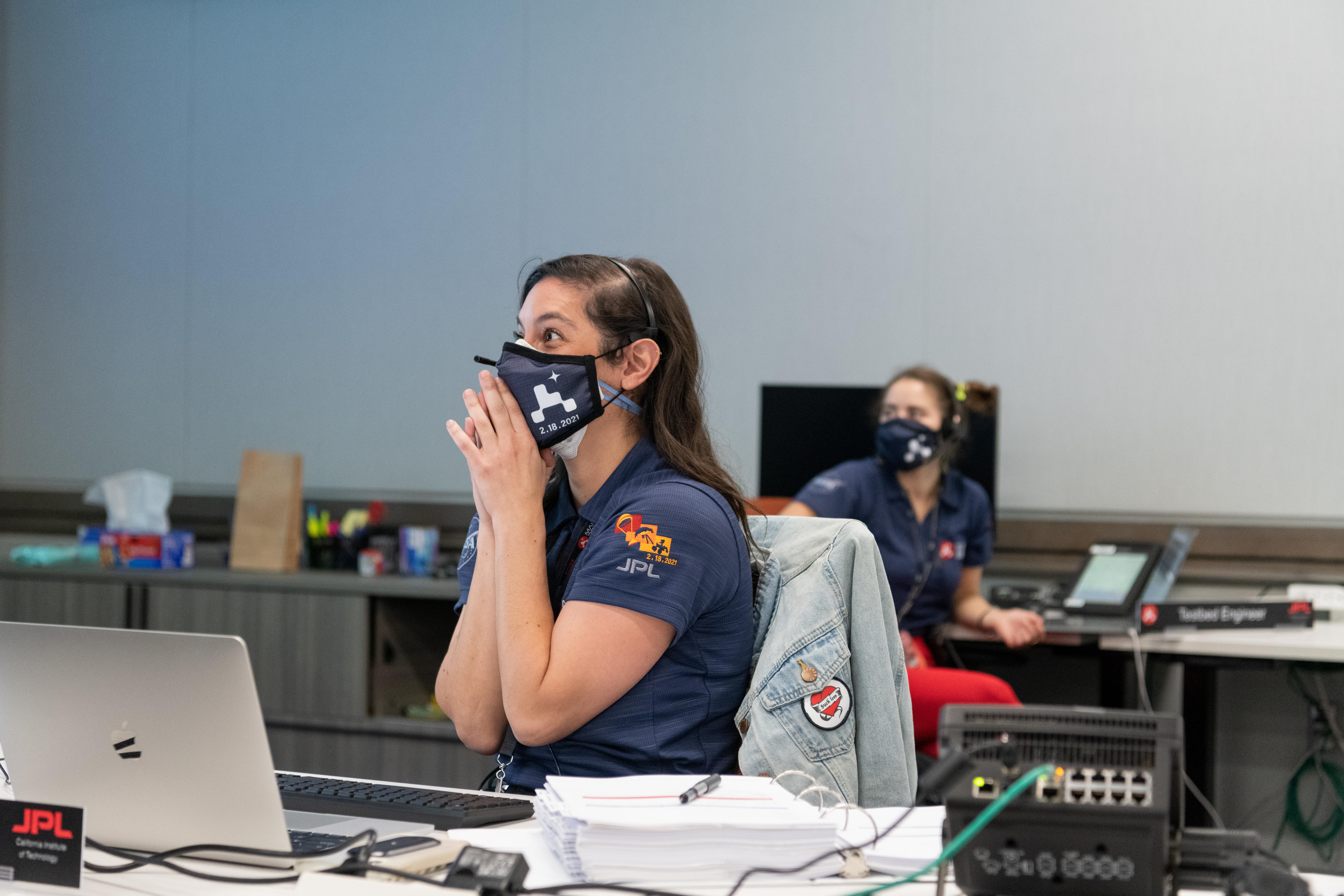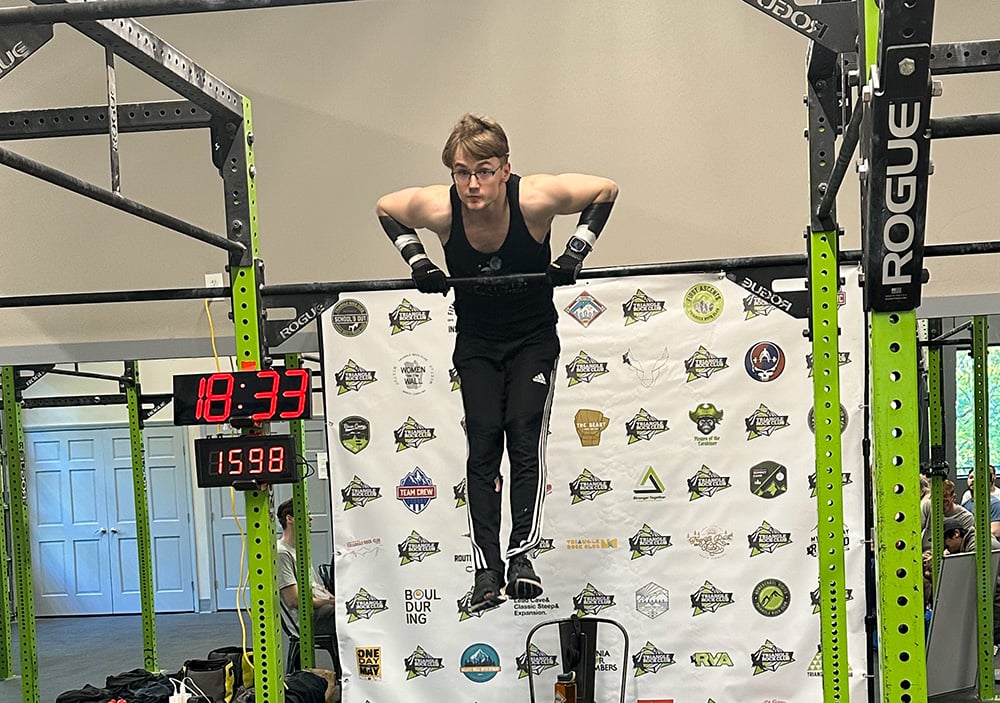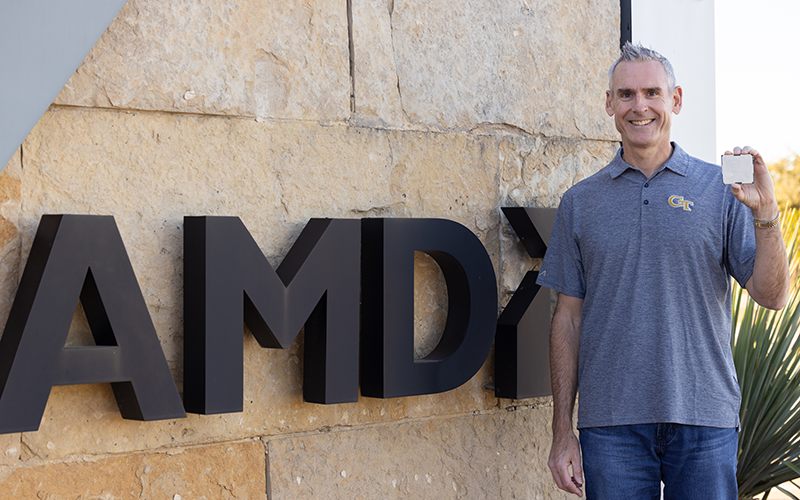What it Feels Like to Land a Spacecraft on Mars
By: Jennifer Herseim, Photos by: NASA/JPL - CalTech | Categories: Alumni Achievements

“It was so surreal,” Lefland remembers. “We do hundreds of simulations and the data coming in looked like another one of those simulations. I had to keep reminding myself that this was actually happening.”
About 45 minutes earlier, Lefland had watched nervously as the spacecraft passed a significant moment in its landing sequence. Up until that point, the spacecraft was programmed to be flexible and willing to reconfigure itself when it detected a fault. But after this point, the spacecraft wouldn’t get a second chance to land. Its behavior needed to change.
“The moment when it switches between those two paradigms can be messy,” says Lefland. She spent a year studying the intricacies of that critical switch.
“I felt a lot of stress about that one moment in time. Seeing that part go smoothly was like, ‘Whew, ok, I can move on,’” she says.
With an 11- to 12-minute communication delay between Earth and the spacecraft, there was little Lefland—or anyone on Earth—could do during the spacecraft’s final descent toward Mars. “The hands-off part is pretty scary. You just have to trust that the spacecraft will behave in the way you expect it to,” Lefland says. “That’s why we work so hard beforehand to account for every scenario.”
The analytical problem-solving that Lefland needed to complete this mission was a trait she credits to her Georgia Tech education. “Tech doesn’t hand anything to you easily. It makes you work and figure out who you are as an engineer.”
Lefland and the landing team had developed software to account for potential faults that the spacecraft might encounter during landing. Their goal was for the ground team on Earth to be as hands-off as possible. When the spacecraft finally landed safely on Mars, Lefland was overwhelmed with joy and relief, but also sadness. As part of the landing team, she had successfully worked herself out of a job on this mission.
“That part was strange because I hadn’t thought about what happened next. I wasn’t sure what I was going to do the next day,” she says.
The feeling didn’t last long though because Lefland’s already at work as EDL flight systems lead for the next mission to Mars, which will bring cached samples of Martian soil and dirt back to Earth.


